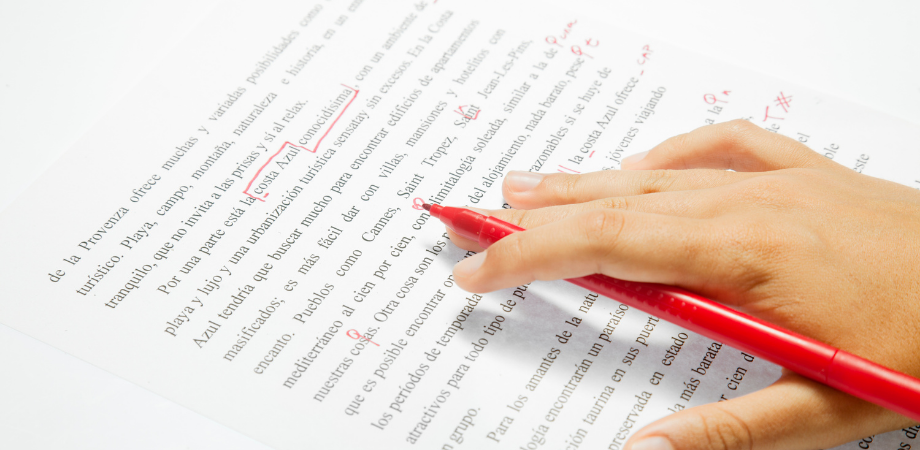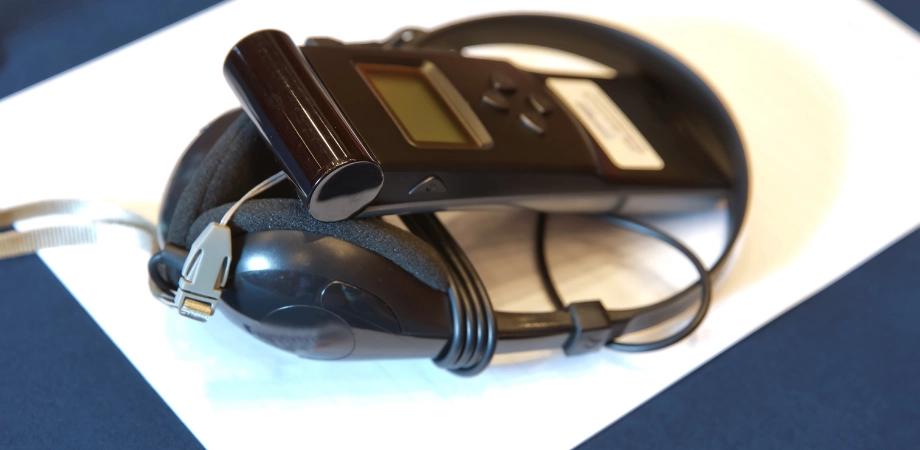In the old days, proofreading, a correctional reading done before documents went into print, still holds its significance in today’s world where digital publications are more prominent. While proofreading serves different purposes today compared to the past when it aimed to prevent wasted resources, it remains an essential task that should be carried out with care. In short, proofreading is the final phase before submitting a work and is of great importance. Considering that even highly scientific or technical texts occasionally fall victim to errors, the importance of conducting proofreading diligently and meticulously becomes evident. In this article, with the aim of facilitating error-free texts, we have prepared a proofreading checklist that can provide you with the best results. Whether you work at translation services or are proofreading your own writing, always keep this proofreading checklist handy.
Why You Need a Proofreading Checklist?
A proofreading checklist is a valuable resource for editors, authors, and even readers. Instead of trying to remember everything when editing a piece of writing, having a reference that highlights common mistakes and errors can be highly beneficial. This way, you can progress in a planned and organized manner while ensuring that the text you are reviewing is error-free.
The Proofreading Checklist

Below, we have examined each item on the proofreading checklist in detail.
1. Style
Style is an item that must be included in the proofreading checklist. Proofreading is not only conducted to identify typos but also to ensure the text’s style is appropriate. The style of the text relates to its readability, proper sentence structures, effective verbal skills, maintaining a balanced tone, and overall visual appeal. How texts that represent thoughts in written form are presented is an important issue.
1.1. Tone and language
The aspect concerning tone and language is crucial to include in the proofreading checklist. This paragraph discusses the literary appropriateness of the text. Depending on the type of text being written, word choices, abbreviations, and sentence structures should be shaped accordingly. For example, in an academic writing, the style should be serious, and slang or colloquial language should not be used, and an unserious tone should not be adopted. The use of language in a specific, objective, and technical manner in such a text is clearly defined, and it should not deviate from these guidelines.
1.2. Typos, spelling, and punctuation
Typos, spelling, and punctuation errors are small yet potentially significant mistakes in a text that can create a sense of mistrust in the reader. They can not only hinder the comprehension of the text but also completely alter the intended meaning of a sentence. While there are many spelling and grammar checkers available today to detect such errors, it is essential to be vigilant against typos, spelling, and punctuation errors to convey your unique ideas to the reader without causing confusion. Typos, spelling, and punctuation should therefore be included in the proofreading checklist.
1.3. Consistent tone
Consistency in the tone of a text means that the writing is balanced. You should continue and finish a text in the same way you started it. The author’s voice should maintain a consistent tone throughout the text, without excessive shifts from one direction to another. A text that constantly oscillates between emotions or tones will not be well-received by the reader. Ultimately, the narrative in the text should maintain a consistent pace, avoiding rapid changes. Reading the text aloud can make it easier to detect such shifts.
1.4. Lucid prose
Expressing ideas in a convoluted or complex manner does not make a piece of writing good. Good writing should be clear and concise, and the path to achieving this is through simplicity. Avoid constructing sentences with an excessive number of words or using convoluted sentence structures; remember that shorter sentences are easier to comprehend. Refrain from repeating the same points multiple times. Ensure that the writing is fluent, easily readable, and understandable. Do not hesitate to remove anything that hinders clarity in the text.
1.5. Coherency
Good writing should convey ideas smoothly in every sentence and paragraph. This is very important to maintain the consistency included in the proofreading checklist. All the components that make up a piece of writing should work together like the gears in a machine, seamlessly interconnected. When proofreading, attention should be given to whether the ideas are comprehensible from the perspective of others. A disjointed, incomplete, or meandering text cannot maintain coherency.
1.6. Clarification of points throughout
In texts containing a substantial amount of information, it is important to guide and organize the reader’s interpretation to prevent arguments from getting lost in between. To avoid the misunderstanding or different interpretations of ideas, it is essential to clarify and elucidate arguments and findings. Without doing so, readers might miss the main point of the text.
2. Grammar
Anyone can make grammar mistakes, but if you overlook them, your writing can become harder to understand. Common grammar errors to watch out for during proofreading are listed below.
2.1. Faulty parallelism and homophones
The error of faulty parallelism, which can be defined as the mismatch between comparable meanings and inconsistent grammatical forms, is a challenging mistake to identify. To spot this error, you should break down long sentences into parts and check them. Another item on the proofreading checklist, homophones, can also lead to common errors. Usage that appears to be grammatically correct may only be noticed by a careful editor. When proofreading a text, pay attention to homophones like affect/effect, brake/break, accept/except, and the like.
2.2. Consistent tense used throughout
You should pay attention to tense shifts in a text. While it may not be grammatically incorrect to transition from present tense to past tense immediately, it is not widely accepted in academic conventions. Frequently switching between tenses can create discontinuity in writing.
2.3. Varied use of vocabulary
Fearlessly use the words in your native language; having a limited number of words in a text can indicate a lack of imagination or vocabulary. Consistently using the same words can make the writing dull. Make an effort to express ideas in different ways by resorting to synonyms.
3. Word Choice and Diction
The following are common errors in word choice and diction that should be included in a proofreading checklist.
3.1. Introduce all acronyms
The correct usage is to provide abbreviations within parentheses immediately after the full expression. For example, “The National Aeronautics and Space Administration (NASA) has increased its Mars expenditures.” Do this for each abbreviation, and then continue to use only the abbreviation within the text. This helps save time and words.
3.2. Jargon
Jargon is a language specific to a particular region or spoken by a particular community. Various disciplines like law, engineering, and medicine have their own specific jargons. A word we use in everyday conversation may have a very different meaning within a specific jargon. Therefore, it is important to be attentive to the use of jargon in a text to avoid overlooking incorrect usage. Jargon must be included in the proofreading checklist.
3.3. Eliminate any unnecessary adjectives and adverbs
When proofreading, pay attention to excessive and unnecessary use of adjectives and adverbs. For example, a sentence like “The brave and courageous warrior bravely and fearlessly left the battlefield” only tells us that the warrior left the battlefield, but it does so by overwhelming us with adjectives. Don’t hesitate to eliminate these words during proofreading.

4. Formatting
Here are some of the most common formatting errors.
4.1. Font and size changes
Careless presentation and formatting can undermine a well-executed piece of work. However, detecting and addressing these issues is relatively straightforward. Make font styles and sizes consistent, organize the layout, ensure the text has a certain symmetry, and correct any glaring irregularities. The formal formatting of academic papers and long essays can be a bit more challenging. Using a template and utilizing formatting aids can make your job easier in such texts.
4.2. Superscripts and footnotes/endnotes
If the footnotes/endnotes, which are the scholarly sources of a work, do not align with the correct references, the foundation of the text crumbles. This situation is unacceptable, and careful attention should be paid to prevent it from occurring. It can be challenging to determine from the placement of footnotes whether they are accurate or not, so each note should be verified. Examine details such as whether the footnotes are valid, if there is any missing or incorrect formatting, or if the format differs from the bibliography, as if you were reading the text for the first time.
4.3. Tables and graphs
When it comes to tables and graphs, there is no room for ambiguity. The numbers provided are either correct or incorrect. In texts where data is of utmost importance, errors in numbers are unacceptable. The same applies to the description of graphs; make sure that a graph referred to as “Appendix B” in the text is in the correct place. Be careful when using visual content and ensure that all labels are accurate.
4.4. References and citations
References and citations are just as important as writing and grammar. Making errors when giving references or making citations can lead to undesirable outcomes. Using coded reference systems correctly can be confusing and challenging, but keeping the ones you regularly use readily accessible can be helpful. If your text includes website links, make sure they are functional. Additionally, when used effectively, machine translation post editing can help you catch such errors.



